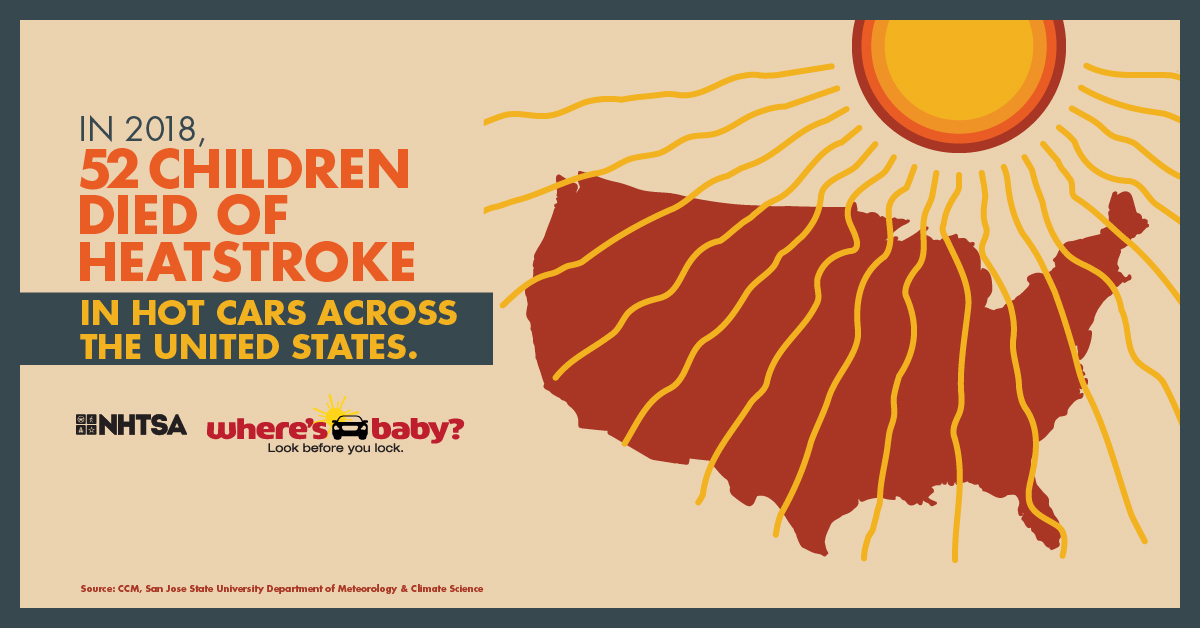Look before you lock
Make a habit of checking your backseat before you lock your car.

As a dangerous heat wave descends upon the Midwest, and in advance of National Heat Stroke Prevention day on July 31, 2019, the National Highway Traffic Safety Administration (NHTSA) is reminding everyone to “look before you lock.” This national campaign urges drivers to develop a routine habit of checking their backseat before locking their car and walking away. Outside of crashes, heatstroke is the number one vehicle-related killer of children in the United States. Vehicle heat stroke occurs when a child is left in a hot vehicle, allowing their body temperature to rise rapidly and often fatally. In the 20 years from 1998 to 2018, 772 children died of heatstroke in hot cars. Already in 2019, 21 children have died in hot cars.
As temperatures outside climb, the interior of vehicles rapidly reach dangerous temperatures. It takes just 10 minutes for a vehicle in the sun to heat up by 20 degrees and become potentially deadly. This means in the forecasted 95-degree heat, the interior of a vehicle can reach a lethal 115 degrees in the time it takes to run into the bank or gas station.
Children are significantly more sensitive to heat stroke than adults. Infant and children’s body temperatures rise three to five times faster than that of adults experiencing the same temperatures. When a child is trapped in a hot vehicle, their body temperature will rise rapidly. Heat stroke begins when the core body temperature reaches 104. A core body temperature of 107 is fatal.
Michigan State University Extension urges all parents and caregivers to do these three things:
- NEVER leave a child in a vehicle unattended.
- Make it a habit to look in the back seat EVERY time you exit the car.
- ALWAYS lock the car and put the keys out of reach.

If you are a bystander and see a child in a hot vehicle:
- Make sure the child is OK and responsive. If not, call 911 immediately.
- If the child appears to be OK, attempt to locate the parents or have the facility’s security or management page the car owner over the PA system.
- If there is someone with you, one person should actively search for the parent while the other waits at the car.
- If the child is not responsive or appears to be in distress, attempt to get into the car to assist the child—even if that means breaking a window. Many states have “Good Samaritan” laws that protect people from lawsuits for getting involved to help a person in an emergency.
Know the warning signs of heatstroke, which include red, hot and moist or dry skin; no sweating; a strong rapid pulse or a slow weak pulse; nausea; confusion; or acting strangely. If a child exhibits any of these signs after being in a hot vehicle, quickly spray the child with cool water or with a garden hose—NEVER put a child in an ice bath. Call 911 or your local emergency number immediately.
More than half (54%) of all vehicle-related heatstroke deaths in children are caused by a child accidentally being left in the car, and 26% are from a child getting into a hot car unsupervised. It only takes a few minutes for a vehicle to reach dangerous temperatures. Take time to develop a vehicle safety routine for your family and prevent tragedy.



 Print
Print Email
Email


